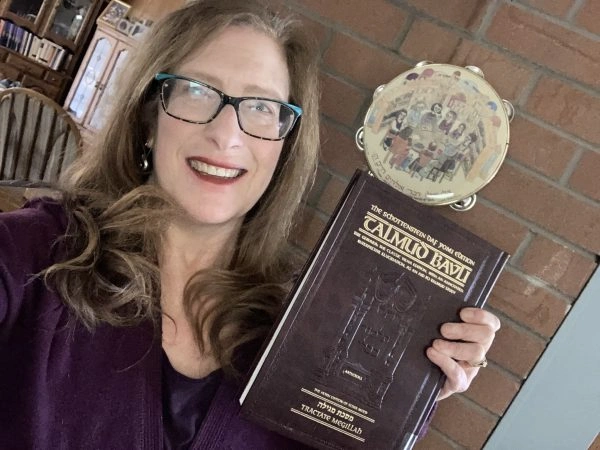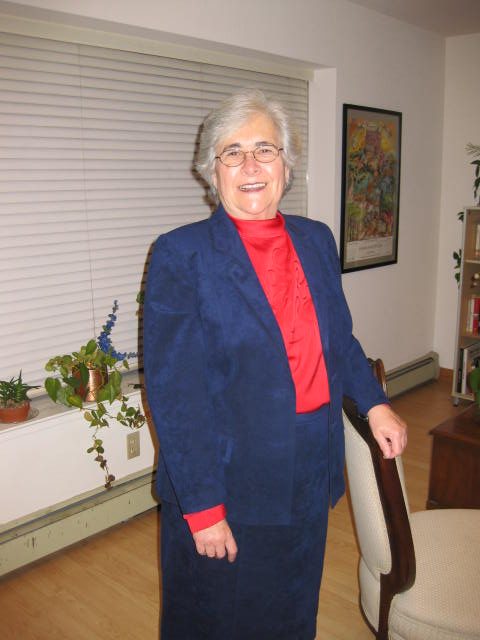Eruvin 9
מְשׁוּכָה אוֹ תְּלוּיָה, פָּחוֹת מִשְּׁלֹשָׁה — אֵין צָרִיךְ לְהָבִיא קוֹרָה אַחֶרֶת. שְׁלֹשָׁה — צָרִיךְ לְהָבִיא קוֹרָה אַחֶרֶת. רַבָּן שִׁמְעוֹן בֶּן גַּמְלִיאֵל אוֹמֵר: פָּחוֹת מֵאַרְבָּעָה — אֵין צָרִיךְ לְהָבִיא קוֹרָה אַחֶרֶת, אַרְבָּעָה — צָרִיךְ לְהָבִיא קוֹרָה אַחֶרֶת.
drawn away from the alleyway walls or suspended in the air, the following distinction applies: If the cross beam is less than three handbreadths from the walls, one is not required to bring a different cross beam, for it is considered attached to the walls based on the principle of lavud, which views two solid surfaces as connected if the gap between them is less than three handbreadths wide. However, if the distance is three or more handbreadths from the walls, he is required to bring a different cross beam in order to permit carrying in the alleyway. Rabban Shimon ben Gamliel, who holds that the principle of lavud applies to a gap of up to four handbreadths wide, says: If the cross beam is less than four handbreadths from the wall, one is not required to bring a different cross beam; but if the distance is four handbreadths from the wall, he is required to bring a different cross beam.
מַאי לָאו — מְשׁוּכָה מִבַּחוּץ, וּתְלוּיָהּ מִבִּפְנִים!
The Gemara wishes to clarify the baraita: What, is it not that when the baraita speaks of a cross beam that is drawn away from the alleyway walls, it is referring to a cross beam that is distanced from the alleyway walls and situated on the outside in the public domain, similar to the case of the cross beam resting on pegs mentioned above? And when it speaks of a cross beam that is suspended, isn’t it referring to a cross beam that is distanced from the alleyway walls and placed on the inside in the alleyway? This interpretation contradicts Rava’s statement above that disqualifies such a cross beam.
לָא, אִידִי וְאִידִי מִבִּפְנִים. מְשׁוּכָה — מֵרוּחַ אַחַת, וּתְלוּיָה — מִשְׁתֵּי רוּחוֹת.
The Gemara rejects this interpretation: No, both this, the cross beam that is drawn away, and that, the crossbeam that is suspended, are located on the inside of the alleyway. The difference between them is that the cross beam that is drawn away is distanced from the wall from one direction, while a suspended cross beam does not lie on the alleyway walls at all, but is distanced from them from both directions.
מַהוּ דְּתֵימָא: מֵרוּחַ אַחַת אָמְרִינַן לָבוּד, מִשְׁתֵּי רוּחוֹת — לָא אָמְרִינַן לָבוּד, קָא מַשְׁמַע לַן.
Lest you say that if the cross beam is distanced from the wall from one direction, we say that the principle of lavud applies, and it is as if the cross beam is joined to the wall; but if it is distanced from the wall from two directions, we do not say that the principle of lavud applies. The baraita, therefore, comes and teaches us that there is no difference in this regard.
רַב אָשֵׁי אָמַר: מְשׁוּכָה וְהִיא תְּלוּיָה, וְהֵיכִי דָּמֵי? כְּגוֹן שֶׁנָּעַץ שְׁתֵּי יְתֵידוֹת עֲקוּמּוֹת עַל שְׁנֵי כּוֹתְלֵי מָבוֹי, שֶׁאֵין בְּגוֹבְהָן שְׁלֹשָׁה, וְאֵין בְּעַקְמוּמִיתָן שְׁלֹשָׁה. מַהוּ דְּתֵימָא: אוֹ ״לָבוּד״ אָמְרִינַן, אוֹ ״חֲבוֹט״ אָמְרִינַן, לָבוּד וַחֲבוֹט לָא אָמְרִינַן. קָא מַשְׁמַע לַן.
Rav Ashi said: The baraita refers to a cross beam that is drawn away from the walls and also suspended in the air. And what are the circumstances where this would be the case? For example, where he inserted two bent pegs on the tops of the two alleyway walls, and the height of the pegs from the top of the walls is less than three handbreadths, and their bend inward is less than three handbreadths, and a cross beam rests on top of them. Lest you say that we either say lavud, i.e., we consider the cross beam to be virtually extended and thus connected to the wall, or we say ḥavut, pressed down, that we consider the cross beam to be pressed down vertically; but we do not say both lavud and ḥavut. The baraita therefore teaches us that even in that case we say that any item adjacent to another with a gap of less than three handbreadths between them is considered connected to it, whether to the side or below, and even in both directions at once.
תָּנֵי רַבִּי זַכַּאי קַמֵּיהּ דְּרַבִּי יוֹחָנָן: בֵּין לְחָיַיִם וְתַחַת הַקּוֹרָה נִידּוֹן כְּכַרְמְלִית. אֲמַר לֵיהּ: פּוֹק תְּנִי לְבַרָּא.
Rabbi Zakkai taught the following baraita before Rabbi Yoḥanan: The area between the side posts and beneath the cross beam has the legal status of a karmelit, and it is forbidden to carry in it. Rabbi Yoḥanan said to him: Exit and teach this halakha outside, i.e., this baraita is not in accordance with the accepted halakha, and therefore it should not be made part of the regular learning in the study hall.
אָמַר אַבָּיֵי: מִסְתַּבְּרָא מִילְּתֵיהּ דְּרַבִּי יוֹחָנָן תַּחַת הַקּוֹרָה, אֲבָל בֵּין לְחָיַיִן אָסוּר. וְרָבָא אָמַר: בֵּין לְחָיַיִם נָמֵי מוּתָּר.
The Gemara records a dispute with regard to the scope of Rabbi Yoḥanan’s statement: Abaye said: Rabbi Yoḥanan’s statement is reasonable with regard to the area beneath the cross beam, as only the area beneath the cross beam should be considered a private domain, but between the side posts, carrying is indeed prohibited, in accordance with the opinion of Rabbi Zakkai. And Rava said: The entire statement of Rabbi Zakkai is to be rejected, as Rabbi Yoḥanan asserted, and even in the area between the side posts carrying is permitted.
אָמַר רָבָא: מְנָא אָמֵינָא לַהּ — דְּכִי אֲתָא רַב דִּימִי, אָמַר רַבִּי יוֹחָנָן: מָקוֹם שֶׁאֵין בּוֹ אַרְבָּעָה עַל אַרְבָּעָה, מוּתָּר לִבְנֵי רְשׁוּת הָרַבִּים וְלִבְנֵי רְשׁוּת הַיָּחִיד לְכַתֵּף עָלָיו, וּבִלְבַד שֶׁלֹּא יַחֲלִיפוּ.
Rava said: From where do I know to say this, that carrying is permitted even between the side posts? For when Rav Dimi came from Eretz Yisrael to Babylonia, he said that Rabbi Yoḥanan said: A place that has an area of less than four by four handbreadths and is located between a public and private domain but belongs to neither has the status of an exempt domain with regard to carrying on Shabbat. Therefore, it is permitted for both the people in the public domain as well as the people in the private domain to use it for loading their burdens onto their shoulders, so long as they do not exchange objects with one another. Therefore, a place having an area of less than four handbreadths is not considered a karmelit, but rather an exempt domain, where carrying is permitted. Consequently, the area between the side posts should likewise be considered an exempt domain, and carrying should be permitted within it.
וְאַבָּיֵי, הָתָם בְּגָבוֹהַּ שְׁלֹשָׁה.
And Abaye said that this offers no proof, as there, with regard to Rav Dimi’s statement, the area being discussed is at least three handbreadths high, setting it apart from the other domains. It is therefore considered a domain in its own right, and has the halakha of an exempt domain.
אָמַר אַבָּיֵי מְנָא אָמֵינָא לַהּ — דְּאָמַר רַב חָמָא בַּר גּוּרְיָא אָמַר רַב: תּוֹךְ הַפֶּתַח, צָרִיךְ לֶחִי אַחֵר לְהַתִּירוֹ.
The Gemara considers the position of Abaye: Abaye said: From where do I know to say this, that the area between the side posts has the halakha of a karmelit? For Rav Ḥama bar Guria said that Rav said: The area within the opening, i.e., the doorway between two entrance posts that serve as side posts to permit carrying in the alleyway, requires another side post in order to permit carrying there, for the entrance posts alone do not suffice. This demonstrates that it is forbidden to carry in the space between the side posts without another side post.
וְכִי תֵּימָא: דְּאִית בֵּיהּ אַרְבָּעָה עַל אַרְבָּעָה, וְהָאָמַר רַב חָנִין בַּר רָבָא אָמַר רַב: תּוֹךְ הַפֶּתַח, אַף עַל פִּי שֶׁאֵין בּוֹ אַרְבָּעָה עַל אַרְבָּעָה צָרִיךְ לֶחִי אַחֵר לְהַתִּירוֹ.
And if you say that this is a case where the doorway has an area four by four handbreadths, and therefore an additional side post is required to permit carrying there, this is not a valid argument. For didn’t Rav Ḥanin bar Rava say that Rav said: The area within the opening itself, even if it does not have an area of four by four handbreadths, requires an additional side post in order to permit carrying within it. This indicates that the area between the side posts is not to be used.
וְרָבָא — הָתָם דְּפָתוּחַ לְכַרְמְלִית.
And Rava replies that a distinction must be made between the cases: There, the case of Rav’s ruling refers to a scenario where the alleyway’s entrance opens to a karmelit, and thus the space between the entrance posts is also viewed as a karmelit, and an additional side post is required.
אֲבָל לִרְשׁוּת הָרַבִּים מַאי — שְׁרֵי? יַצִּיבָא בְּאַרְעָא וְגִיּוֹרָא בִּשְׁמֵי שְׁמַיָּא!
The Gemara poses a question: But if the entrance opens to a public domain, what would be the halakha? Would it be permitted to carry there even without an additional side post? If so, it follows that the halakha of a karmelit is more stringent than that of a public domain. However, this seems untenable, for carrying in a karmelit is prohibited only by rabbinic decree, owing to the similarity between a karmelit and the public domain. This is similar to a situation where a permanent resident is down on the ground, while a stranger is raised up to the highest heaven, the very opposite of the appropriate state of affairs.
אִין, מָצָא מִין אֶת מִינוֹ וְנֵיעוֹר.
The Gemara comments: Yes, it is possible that this is the ruling, for we can say that it has found its own type and been awakened. In other words, as the area within the entranceway is not a defined domain, it doesn’t have the status of an independent domain. Therefore, when it opens into a karmelit, to which it is similar, its status is negated, and it joins with the karmelit to form a single unit. However, when it opens into a public domain, it cannot join with it because it is not similar to a public domain, which has a totally different set of laws; and therefore it is considered part of the alleyway, and it is permitted to carry within it.
אֲמַר לֵיהּ רַב הוּנָא בְּרֵיהּ דְּרַב יְהוֹשֻׁעַ לְרָבָא: וְאַתְּ לָא תִּסְבְּרָא דְּבֵין לְחָיַיִן אָסוּר? וְהָאָמַר רַבָּה בַּר בַּר חָנָה אָמַר רַבִּי יוֹחָנָן: מָבוֹי שֶׁרְצָפוֹ בִּלְחָיַיִן פָּחוֹת פָּחוֹת מֵאַרְבָּעָה — בָּאנוּ לְמַחְלוֹקֶת רַבָּן שִׁמְעוֹן בֶּן גַּמְלִיאֵל וְרַבָּנַן.
Rav Huna, the son of Rav Yehoshua, said to Rava: And you do not hold that in the area between the side posts carrying is prohibited? But didn’t Rabba bar bar Ḥana say that Rabbi Yoḥanan said: If an alleyway was lined with side posts, each one set more than three but less than four handbreadths apart from its neighbor, we have arrived in this matter at the dispute between Rabban Shimon ben Gamliel and the Rabbis with regard to the measure of lavud.
לְרַבָּן שִׁמְעוֹן בֶּן גַּמְלִיאֵל דְּאָמַר: אָמְרִינַן לָבוּד, מִשְׁתַּמֵּשׁ עַד חוּדּוֹ הַפְּנִימִי שֶׁל לֶחִי הַפְּנִימִי. לְרַבָּנַן, דְּאָמְרִי: לָא אָמְרִינַן לָבוּד, מִשְׁתַּמֵּשׁ עַד חוּדּוֹ הַפְּנִימִי שֶׁל חִיצוֹן. אֲבָל בֵּין לְחָיַיִן דְּכוּלֵּי עָלְמָא אָסוּר!
How so? According to Rabban Shimon ben Gamliel, who said that if the gap between two items is less than four handbreadths, we say that the principle of lavud applies; all the side posts are considered a single side post. He may therefore only utilize the alleyway up to the inner edge of the innermost side post, but no more. However, according to the Rabbis, who say that we do not say the principle of lavud applies unless the gap is less than three handbreadths, he may utilize the alleyway up to the inner edge of the outermost side post. This discussion demonstrates that the argument revolves around the question as to which side post establishes the permitted area. But with regard to the area between the side posts, all agree that carrying is prohibited.
וְרָבָא, הָתָם נָמֵי דְּפָתוּחַ לְכַרְמְלִית.
And Rava answers that there too, it refers to a case where the alleyway’s entrance opens to a karmelit.
אֲבָל לִרְשׁוּת הָרַבִּים מַאי — שְׁרֵי? יַצִּיבָא בְּאַרְעָא וְגִיּוֹרָא בִּשְׁמֵי שְׁמַיָּא! אִין, מָצָא מִין אֶת מִינוֹ וְנֵיעוֹר.
The Gemara raises a difficulty: But if the entrance opens to a public domain, what is its legal status – would carrying be permitted? If so, the halakha of a karmelit is more severe than that of a public domain. Once again, this can be likened to a situation where a permanent resident is down on the ground, while a stranger is raised up to the highest heaven. The Gemara answers: Yes, indeed, this is the ruling, but one should not be perplexed, as we have explained: it has found its own type and been awakened.
רַב אָשֵׁי אָמַר: כְּגוֹן שֶׁרְצָפוֹ בִּלְחָיַיִם פָּחוֹת פָּחוֹת מֵאַרְבָּעָה בְּמֶשֶׁךְ אַרְבַּע אַמּוֹת.
The Gemara provides an alternative explanation of Rabbi Yoḥanan’s statement. Rav Ashi said: According to Rabbi Yoḥanan, carrying in the area between the side posts is actually permitted. The dispute between Rabban Shimon ben Gamliel and the Rabbis concerning the principle of lavud is in a case where there was an alleyway that one lined with side posts, each positioned less than four handbreadths from the next, and the side posts extend for a length of four cubits.
לְרַבָּן שִׁמְעוֹן בֶּן גַּמְלִיאֵל דְּאָמַר: אָמְרִינַן לָבוּד — הָוֵה לֵיהּ מָבוֹי, וְצָרִיךְ לֶחִי אַחֵר לְהַתִּירוֹ. וּלְרַבָּנַן דְּאָמְרִי: לָא אָמְרִינַן לָבוּד — לֹא צָרִיךְ לֶחִי אַחֵר לְהַתִּירוֹ.
According to Rabban Shimon ben Gamliel, who said that for a gap of up to four handbreadths we say that the principle of lavud applies, all the side posts are considered a single side post, and since the side post in that case is four cubits long, it is considered a separate alleyway; therefore, it requires an additional side post to permit carrying in it. And according to the Rabbis, who say that we do not say that the principle of lavud applies unless the gap is less than three handbreadths, this area does not require an additional side post to permit carrying within it.
וּלְרִבֵּן שִׁמְעוֹן בֶּן גַּמְלִיאֵל, לֶהֱוֵי כְּנִרְאֶה מִבַּחוּץ וְשָׁוֶה מִבִּפְנִים!
The Gemara asks: And even according to the opinion of Rabban Shimon ben Gamliel, why is another side post required? Let it have the same legal status as a side post that is visible from the outside, protruding from the wall of the alleyway, but appears to be even with the wall from the inside. Since it is evident from the outside that it is a side post and not part of the building, carrying is permitted there.
מִידֵּי הוּא טַעְמָא אֶלָּא לְרַבִּי יוֹחָנָן, הָא כִּי אֲתָא רָבִין אָמַר רַבִּי יוֹחָנָן: נִרְאֶה מִבַּחוּץ וְשָׁוֶה מִבִּפְנִים אֵינוֹ נִידּוֹן מִשּׁוּם לֶחִי.
The Gemara answers: As Rav Ashi’s reason is only according to the opinion of Rabbi Yoḥanan, when Ravin came from Eretz Yisrael to Babylonia, didn’t he say that Rabbi Yoḥanan said: If a side post is visible from the outside, protruding from the wall of the alleyway, but it appears to be even with the wall from the inside, it is not considered to have the legal status of a side post?
אִיתְּמַר: נִרְאֶה מִבִּפְנִים וְשָׁוֶה מִבַּחוּץ — נִידּוֹן מִשּׁוּם לֶחִי. נִרְאֶה מִבַּחוּץ וְשָׁוֶה מִבִּפְנִים, רַבִּי חִיָּיא וְרַבִּי שִׁמְעוֹן בְּרַבִּי, חַד אָמַר: נִידּוֹן מִשּׁוּם לֶחִי, וְחַד אָמַר: אֵינוֹ נִידּוֹן מִשּׁוּם לֶחִי.
An amoraic dispute was stated: If a side post is visible from the inside, protruding from the wall of the alleyway, but it appears to be even with the wall from the outside, it is considered a side post. However, if a side post is visible from the outside protruding from the wall, but it appears to be even with the wall from the inside, there is a disagreement between Rabbi Ḥiyya and Rabbi Shimon, son of Rabbi Yehuda HaNasi, with regard to its status. One said: It is considered to have the legal status of a side post. And the other one said: It is not considered to have the legal status of a side post.
תִּסְתַּיֵּים דְּרַבִּי חִיָּיא הוּא דְּאָמַר ״נִידּוֹן מִשּׁוּם לֶחִי״, דְּתָנֵי רַבִּי חִיָּיא: כּוֹתֶל שֶׁצִּידּוֹ אֶחָד כָּנוּס מֵחֲבֵירוֹ, בֵּין שֶׁנִּרְאֶה מִבַּחוּץ וְשָׁוֶה מִבִּפְנִים, וּבֵין שֶׁנִּרְאֶה מִבִּפְנִים וְשָׁוֶה מִבַּחוּץ נִידּוֹן מִשּׁוּם לֶחִי, תִּסְתַּיֵּים.
The Gemara clarifies: Conclude that Rabbi Ḥiyya is the one who said that it is considered to have the legal status of a side post, as Rabbi Ḥiyya taught: In the case of a wall at the entrance to an alleyway whose one side is more recessed than the other, whether the recess is visible from outside the alleyway but appears to be even from the inside, or the recess is visible from the inside but appears to be even from the outside, it is considered to have the legal status of a side post. The Gemara states: Indeed, conclude that Rabbi Ḥiyya is the one who said it has the legal status of a side post.
וְרַבִּי יוֹחָנָן מִי לָא שְׁמִיעַ לֵיהּ הָא?! אֶלָּא שְׁמִיעַ לֵיהּ וְלָא סָבַר לַהּ, רַבִּי חִיָּיא נָמֵי לָא סָבַר לַהּ!
The Gemara rejects this conclusion: And Rabbi Yoḥanan, who explicitly said that a side post of that kind is not considered a side post, did he not hear this halakha? The Tosefta was widely known. Rather, he heard it, but he does not hold in accordance with it. Perhaps, then, Rabbi Ḥiyya also does not hold in accordance with it.
הַאי מַאי?! בִּשְׁלָמָא רַבִּי יוֹחָנָן לָא סָבַר לַהּ — מִשּׁוּם הָכִי לָא תָּנֵי לַהּ. אֶלָּא רַבִּי חִיָּיא, אִי אִיתָא דְּלָא סָבַר לַהּ, לְמָה לֵיהּ לְמִיתְנָא?
The Gemara answers: What is this comparison? Granted, Rabbi Yoḥanan does not hold in accordance with that halakha. That is why he did not teach it. But Rabbi Ḥiyya, if it is true that he does not hold in accordance with it, why would he teach it?
אָמַר רַבָּה בַּר רַב הוּנָא: נִרְאֶה מִבַּחוּץ וְשָׁוֶה מִבִּפְנִים — נִידּוֹן מִשּׁוּם לֶחִי. אָמַר רַבָּה, וּמוֹתְבִינַן אַשְּׁמַעְתִּין: חָצֵר קְטַנָּה שֶׁנִּפְרְצָה לִגְדוֹלָה — גְּדוֹלָה מוּתֶּרֶת וּקְטַנָּה אֲסוּרָה, מִפְּנֵי שֶׁהִיא כְּפִתְחָהּ שֶׁל גְּדוֹלָה. וְאִם אִיתָא, קְטַנָּה נָמֵי תִּשְׁתְּרֵי בְּנִרְאֶה מִבַּחוּץ וְשָׁוֶה מִבִּפְנִים.
Rabba bar Rav Huna said: If a side post is visible from the outside, protruding from the wall of the alleyway, but appears to be even with the wall from the inside, it is considered to have the legal status of a side post. Rabba said: And we raise an objection to our own halakha from a mishna: With regard to a small courtyard that was breached along the entire length of one of its walls so that it opens into a large courtyard, in the large one it is permitted to carry and in the small one it is prohibited to carry. This is because the breach is considered an entrance of the large courtyard. The wall of the smaller courtyard was breached along its entire length, therefore there is no visible partition from inside the smaller courtyard. However, the partition is noticeable from the outside, i.e., in the large courtyard, since the breach is flanked on both sides by the remaining segments of the wall of the large courtyard. And if it is so, that a partition that is visible from the outside is considered a partition, carrying in the small courtyard should also be permitted in this case, as the wall is visible from the outside but appears to be even from the inside.
אָמַר רַבִּי זֵירָא: בְּנִכְנָסִין כּוֹתְלֵי קְטַנָּה לִגְדוֹלָה.
Rabbi Zeira said: This mishna is referring to a case where the walls of the small courtyard protrude into the large one, i.e., the breached wall of the small courtyard is not in line with the wall of the large one. Therefore, even when viewed from the outside there are no walls visible, and that is why carrying is prohibited there.
וְלֵימָא לָבוּד וְתִשְׁתְּרֵי!
The Gemara asks: And let us say that the principle of lavud applies, and then carrying will be permitted even in the small courtyard. The ends of the breached wall should be considered attached to the side walls of the large courtyard, rendering the wall of the large courtyard visible. Then it will be permitted to carry in the small courtyard based on the principle governing side posts visible from the outside.
וְכִי תֵּימָא דְּמַפְלְגִי טוּבָא? וְהָא תָּנֵי רַב אַדָּא בַּר אֲבִימִי קַמֵּיהּ דְּרַבִּי חֲנִינָא: קְטַנָּה, בְּעֶשֶׂר. גְּדוֹלָה, בְּאַחַת עֶשְׂרֵה!
And if you say that the walls of the smaller courtyard are too separate from the walls of the larger courtyard, such that the distance between the walls is too great for the principle of lavud to apply, didn’t Rav Adda bar Avimi teach before Rabbi Ḥanina: The small courtyard of which they speak is referring even to one ten cubits wide; the large one is referring even to one eleven cubits wide? Apparently, this halakha applies even when the difference in width between the courtyards is a single cubit, which is six handbreadths. Assuming the small courtyard is located equidistant from the ends of the large courtyard, only three handbreadths separate it on each side from the wall of the large one. Therefore, the principle of lavud applies.
אָמַר רָבִינָא: בְּמוּפְלָגִין מִכּוֹתֶל זֶה בִּשְׁנַיִם, וּמִכּוֹתֶל זֶה בְּאַרְבָּעָה.
Ravina said: It is a case where the walls of the smaller courtyard are separated from this wall of the larger courtyard by two handbreadths and from this wall of the larger courtyard on the other side by four handbreadths. Since there is a distance of more than three handbreadths, the principle of lavud does not apply.
וְלֵימָא לָבוּד מֵרוּחַ אַחַת, וְתִשְׁתְּרֵי.
The Gemara asks: And let us say that the principle of lavud applies from one direction, then carrying will be permitted even in the small courtyard.























